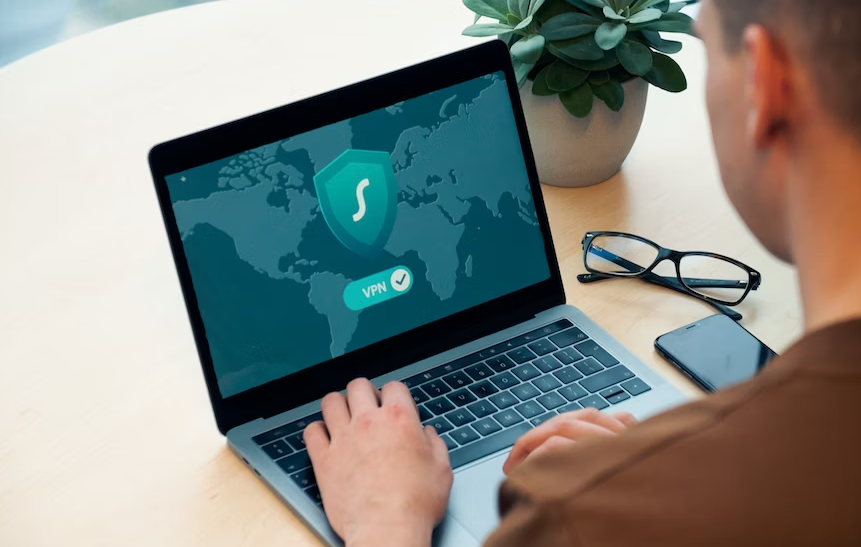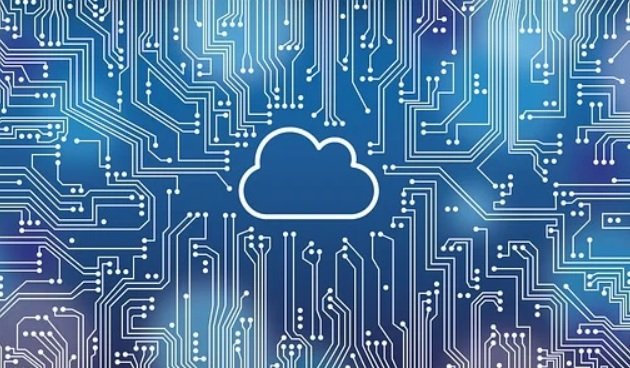Top Three Major Cybersecurity Goals in 2024

Credit - Unsplash
The article contains cybersecurity goals for 2024. It emphasizes the CIA triad: confidentiality, integrity, and availability. By highlighting some major objectives such as data protection, integrity preservation, authentication, access control, and the importance of network security. Emerging trends include the impact of artificial intelligence, blockchain, and quantum computing.
What is Cyber Security?
Cyber security is the protection of computer systems and networks from attacks by malicious elements. Cyber security prevents unauthorized disclosure of information, theft of software or data, damage to hardware, and disruption or misdirection.
Also Read -
Three Main Goals of CyberSecurity and CIA Triad
Here are the top three goals of cyber security-
Confidentiality- Collect, store, and share data in digital space only with authorized people provide access to sensitive information including PII (Personally Identifiable Information) by Full Security and you know e-commerce sites need more privacy.
Integrity- ensures that the information is completely original and accurate. Also, integrity maintains the dependability of information. The stored data, data transmitted, or used data must not be changed at any time unless unauthorized activity.
Availability- ensures access to information to authorized personnel at the right time. They must be able to process data when needed.
Objectives of CyberSecurity
The goal of cybersecurity is to ensure secure storage, control access, and prevent unauthorized processing, transfer, or deletion of data. It helps by protecting the available information, integrity and confidentiality.
Many cyber security measures are put in place to protect networks and computer hardware from unwanted threats and damage. Organizations draft security goals and policies based on cybersecurity standards that they are required to follow.
How to achieve CIA triad goals?
With a little commitment, structural reforms, and regular monitoring, it is possible to achieve the goals of the CIA triad.
Here are a few things that you should be aware of, listed below:
|
Confidentiality |
Integrity |
Availability |
|
Encryption of Data |
Checksums |
Redundancy |
|
Access Control |
Data Backups |
Programmed failovers |
|
Physical Security |
Digital Signatures |
|
|
Non-disclosure Agreement |
Correction Codes |
|
|
Authentication & Authorization |
Cyber security goals examples
Examples of cybersecurity goals are - one-time passwords (OTP), use of biometrics, ATM receipts, transaction history, payments through mobile Apps, etc.
1. Improving data protection
Data protection relies on technologies, Storage, In-built data protection, Firewalls, Encryption, and end point protection. You should be happy if our cyber security keeps your data safe. Because your data covers many things- business operations, growth, and finances. Companies prevent data breaches and reputational damage to their data and better meet regulatory requirements.
2. Data integrity preservation
Data integrity preservation is important to maintain the integrity of the overall data in the presence of accidental errors, and internal, and external attacks. To prevent data integrity we can use an end-to-end signature scheme and homomorphic signature. It generates a homomorphic signature that is compatible with thein-network aggregation scheme and supports efficient batch verification. To protect against suspicious or compromised meters and external attacks, we can use a hop-by-hop signature scheme and an incremental verification protocol.
3. Authentication
Authentication is the act of proving a claim, such as the identity of a system user. You can say that authentication is a type of identification of a person or thing. In authorization, we often use personal identity documents or digital certificates to authenticate. Authorization is different from authentication because authentication says, "You are who you say you are" but authorization says, "You are allowed to do what you are trying to do". So don't be confused between authorization and authentication.
For example, if you are trying to login to a computer system this does not mean that authorization assumes authentication because an agent can be authorized for a limited number of actions.
4. Access control
A familiar use of authentication and authorization is access control. A computer system that should be used only by authorized people should try to detect and exclude the unauthorized. Access to it is therefore usually controlled by insisting on an authentication process to establish the user's identity with some degree of confidence, with privileges established for that identity.5. Availability
Every user deserves accessible cybersecurity technologies to keep their online accounts and data as safe as possible. But if those tools aren't intentionally designed with accessibility or inclusivity in mind, it's highly unlikely that everyone will be able to use them equally. However, with more accessible and responsive cybersecurity tools, all employees will have the resources they need to protect the company - and the business will be in a better position to survive a potential attack or breach.
Importance of Network Protection in Cybersecurity
Network security is one of the most important things in cybersecurity because it protects our sensitive data and information from cyber-attacks and ensures that the network is usable and reliable for us. Network security is a crucial matter so be serious and give your attention to malware, sensitive information, confidential information, personal data, security, and hacking. So network security is essential for protecting against unwanted and suspected things.
Network security is an important aspect of modern technology. The increasing dependence on technology in our daily lives makes the need for secure networks more important than ever. Organizations should take steps to ensure network security by implementing measures such as network segmentation, firewall protection, encryption, strong passwords, and regular updates and patches. By doing so, organizations can protect sensitive information and prevent significant financial losses and reputational damage from cyber attacks.
The Potential of Cybersecurity: Emerging Trends and Concerns
According to Forbes magazine, at the end of this year, the cost of cyber attacks on the global economy is estimated to exceed $10.5 trillion. This huge amount reflects the growing need to consider cybersecurity at the individual, organizational, and government levels.
Also, it is a most needed thing for all, they should make a strategy for this. As you know artificial intelligence (AI) is having a heavy transformative impact on both sides of the cyber world. It means AI is helpful for both attack and defense. You can feel the effect of AI on every trend including cyber security.
In recent years the pace of technological advancement has accelerated in many fields. In the year 2024, we should be on high alert in the matter of Cybersecurity.
Some specific upcoming cyber security challenges are here-
- After the governmental intervention, the organizations started using ''Zero trust'' security models and also the government. It means now, access to sensitive information is strictly controlled and monitored. This technique can lower the possibility of unauthorized access. It also helps to prevent cyber-attacks.
- Due to its decentralized nature blockchain can be used to securely store and transfer information. It is very difficult for cybercriminals to compromise a blockchain network. This is especially true for industries like finance, healthcare, and government, where the risk of a data breach can have serious consequences.
- Artificial Intelligence (AI) and Machine Learning (ML) technologies are one of the biggest trends in the future of cybersecurity. AI and ML algorithms can analyze large amounts of data and detect patterns and anomalies that may indicate a potential threat.
- There is an interconnected future of cybersecurity and quantum computing. It has the potential to revolutionize the way of data processing and protection. As you know quantum computers have the potential to solve these problems more quickly than other operating systems. Quantum computers have the potential to solve problems more quickly, potentially making existing encryption methods.
- Both cybersecurity and cloud Cybersecurity and cloud computing are closely related, as the increasing use of cloud computing has given rise to new security challenges and concerns. Through cloud computing organizations become able to store and process data on remote servers. But storing the data on remote servers is more vulnerable to cyber-attacks.
Cyber Defense Techniques for Reducing Cyber Threats
Here are some important defense techniques for reducing cyber threats. It will be helpful as you follow these -
- Make your data encrypted: To avoid cyber threats, avoid plain text and make your sensitive data encrypted as encryption provides limited access to those with the security key.
- Regular Backup: Create regular backups to prevent your data loss from cybersecurity breaches. There is a special rule for backup which is the 3-2-1 rule. Keep at least 3 copies of your data, store 2 on diverse media, and maintain 1 offsite for backup purposes. This strategy ensures data security and recovery in case of unauthorized access, or system failure, or security breaches.
- Trained your employees: Hackers gain access to your data through phishing emails sent to your employees, this is the most common way for hackers to reach their targets. It is important to conduct cyber security awareness training. Also, stress the importance of checking email addresses before responding to them. Always be aware and check the links before clicking on them.
- System Updation: It is often seen that hackers write code that affects your computer and after that, they can use it to take advantage of vulnerabilities. As you understand all those codes will be full of malware and affect your data and information. So always use an updated system or keep updated security.
- Keep Always Strong Password: According to data 80% of organizational data breaches result due to their weak passwords. As you know password cracking technology is getting advanced day by day, so hackers do not need much effort to break into your security. To avoid this problem you should always keep a strong password that contains at least 8 alphanumeric characters along with special characters.
Also Read -
Conclusion
This is an extremely important thing in this new cyber era. Must keep in mind that our current world depends on the internet, cyber, and technology. Necessary steps should be taken about cyber security and its growth. Have a good day.
FAQs
Que: What are some cyber security goal examples?
Ans: Here are the top three goals of cyber security- Confidentiality, Integrity, and Availability.
Que: What are the 3 P's of cyber security?
Ans: The 3 P's of cyber security are patches, passwords, and phishing.
Que: What are smart goals for cyber security?
Ans: Specific, Measurable, Achievable, Relevant, and Time-oriented goals are called Smart goals of cyber security.
Que: What are some examples of cyber security threats?
Ans: These are some examples of cyber security threats-
- Malware attacks and Password attacks.
- Software supply chain attacks.
- Advanced persistent threats (APT)
- Distributed denial of service (DDoS)
- Man-in-the-middle attack (MitM)








